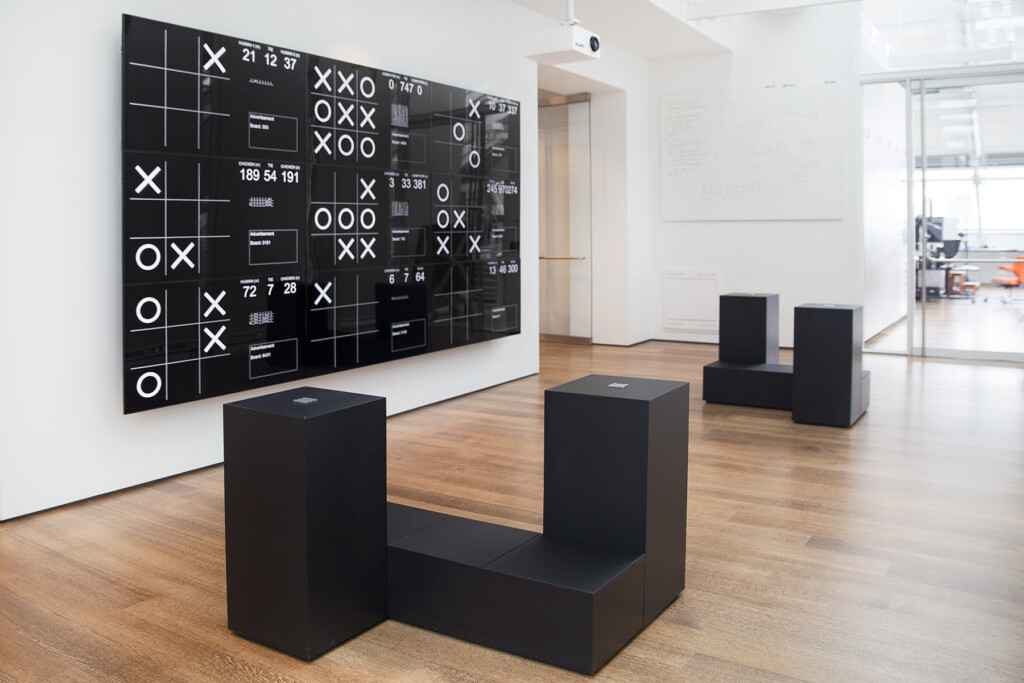OXO is an interactive installation with a contemporary take on tic-tac-toe. It’s shown on a grid of nine displays, with four different types of players competing against each other: human, chicken, computer, and AI. Visitors can participate in the role of human on one of the corner displays.
Tic-tac-toe is one of the earliest known computer games. JODI based their installation on the version by Alexander S. Douglas — OXO, developed in 1952 — one of the first computer games that allowed humans to play against the computer. It’s virtually impossible to beat the computer program, and its extreme simplicity could be precisely what serves as a power source for today’s technology.

The chicken player refers to another part of the history of tic-tac-toe. In the past, people would ‘play’ tic-tac-toe against a live chicken in a game called Bird Brain. The chicken was locked in a small booth and would press a button connected to a simple computer program that determined the corresponding tic-tac-toe move.
JODI uses this installation as a way to reflect on the early days of computing and gaming, as well as the long history of artificial intelligence.
Credits
- Produced by: JODI, http://wwwwwwwww.jodi.org/
- For: Harvard Art Museum, Lightbox Gallery, https://harvardartmuseums.org/article/games-in-the-gallery